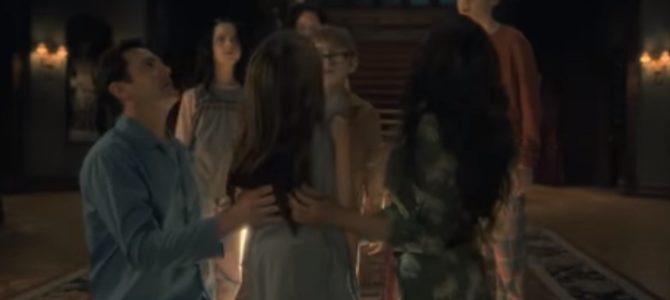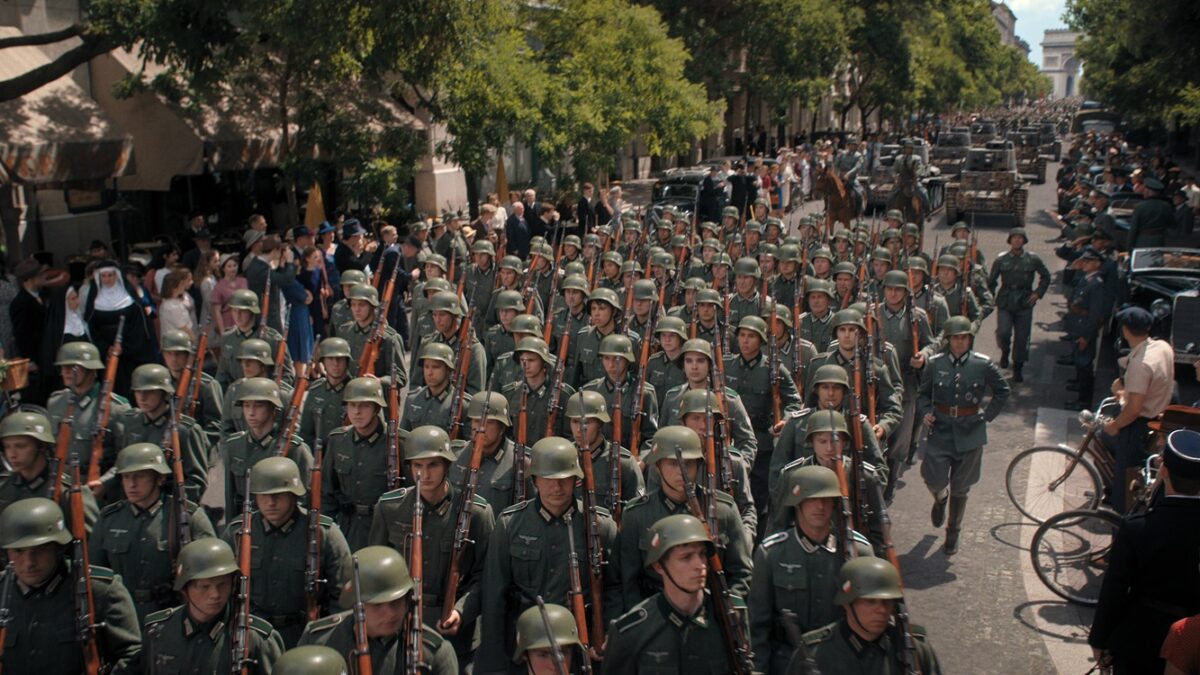
I’ll begin with the somewhat disappointing revelation that Mike Flanagan’s Netflix series, “The Haunting of Hill House,” resembles Shirley Jackson’s classic novel in name only. Yes, Flanagan borrows the title, a haunted house, and the names of several characters from Jackson’s source material, but that’s about it. It’s a minor complaint, since the 1963 Robert Wise adaptation featuring Julie Harris, Claire Bloom, and Russ Tamblyn still holds up admirably.
What Flanagan does deliver — and for the most part successfully — is a 10-part series that depicts the existential blind alleys and moral cul-de-sacs of a family not only devoid of religious faith but inextricably beholden to nominalism, the belief that truth is derived only from observable data. This point of view has plagued humanity since it was introduced as a foundation of Enlightenment reasoning in the 14th century by William of Ockham, rendering the human condition devoid of divine mystery, natural law, and an enduring moral order in favor only of empirical, observable “facts.”
From an early episode when a character declares religion isn’t really the family’s “thing,” it’s only a matter of another few episodes before someone predictably recites from “Hamlet”: “There are more things in heaven and earth, Horatio, than are dreamt of in your philosophy.” The family’s failure to accept Shakespeare’s rebuke of nominalism’s blinkered reliance on observable facts at the expense of universal truth yields tragic results, the most obvious being death by suicide or supernatural misadventure, in addition to characters suffering from alcoholism, heroin addiction, and pervasive existential misery.
The show deftly alternates between two distinct timelines. The first details a young couple and their five children who occupy the titular abode for the purpose of restoring and flipping it. Part of the series’ (unintended?) horror is the “everything that can go wrong goes wrong” depiction of expensive home repairs, including remedying black mold, broken windows, and busted pipes as well as discovering mummified bodies sealed behind brick walls in a sprawling, aged mansion.
The second timeline portrays the longterm effects that a summer spent in Hill House had on the father and his now adult children, who are strangely more perturbed by things that go bump in the night than they are by that corpse alluding to Edgar Allen Poe’s “The Black Cat.” Once the body’s removed, it’s never mentioned again.
Whereas Jackson’s novel blurred distinctions between what appears to be an actual haunted house and the psychological infirmities of the book’s female protagonist in true “Turn of the Screw” fashion, Flanagan’s version borrows more from Stanley Kubrick’s interpretation of Stephen King’s “The Shining.”
Flanagan’s house falls short of the bloody cascades of supernatural terror of the Overlook Hotel as rendered by Kubrick, but it’s still occupied by twin siblings and all manner of ghostly horrors, including, most shockingly, the Bent-Necked Lady. This last apparition is the centerpiece of the series’ most bone-chilling sequence. There are several that borrow heavily from the rotating-camera-on-a-turntable playbook of director Brian De Palma.
But for all the shrieking kids and furrowed brows of their parents, the true horror is what becomes of the family after they abandon Hill House. The ghosts that attach to the characters in the New England mansion 20 years previous continue to haunt in various ways decades later.
The oldest brother, Steven (a nod to Stephen King?), played as an adult by Michiel Huisman, cynically exploits his family’s tragedy to launch his career as a writer of haunted house books he foists upon the public. Younger sister Shirley (Elizabeth Reaser) and her husband run a funeral home financially endangered by her misguided philanthropy and aversion to profits.
Another sister, Theodora (Kate Siegel), is a psychologist who wears gloves to harness her empathetic abilities and masks her anguish in alcoholism and promiscuity. The twins, Luke (Oliver Jackson-Cohen) and Nell (Victoria Pedretti), are the youngest siblings and those most harmed by the refusal of their parents, Hugh Crain (Henry Thomas/Timothy Hutton) and Olivia (Carla Gugino), to provide their children with a religious upbringing.
The young actors portraying the siblings as children (respectively: Paxton Singleton, Lulu Wilson, Mckenna Grace, Julian Hilliard, and Violet McGraw) acquit themselves more than admirably in roles that require them to behave as believable children in increasingly unbelievable circumstances. Of all the performances listed above, Hutton shines most as a man determined to fix a broken world by mistakenly shielding his children from it while Gugino is alternately luminous and terrifyingly unhinged.
Strongly suggested throughout “The Haunting of Hill House” is the failure of nominalism to fully grasp the totality of human existence. Hugh’s view of the world is mechanistic. He repeatedly remarks that he can fix things, whether it’s a house, a model, or his wife’s deteriorating mental condition. Olivia drafts architectural blueprints through which she attempts to impose mathematical order on her surroundings.
Steven believes he can employ logic, rhetorical trickery, and other skills as a writer to order the universe into a tidy whole. Theodora is a psychologist who relies on science alone to navigate her miserable existence and holds her empathetic powers at bay by wearing gloves.
Shirley relies on a form of secular humanism by giving away her business’ services and merchandise at cost or even at a loss to the less-fortunate and guaranteeing the eventual failure of the funeral home she owns and operates with her husband. She even allows Theodora to live in her guest house while entertaining a steady stream of one-night stands. The twins haven’t developed such coping mechanisms as the rest of their family, and succumb to addiction and paralyzing fear.
Without providing spoilers, I will add that the series’ conclusion was less than satisfying for me. Flanagan’s script and direction whiffs it by abandoning humanity’s need for religious faith that strongly resonated throughout the series— that is, until the final episode, when he resorts to providing a somewhat banal tribute to earthbound, familial love no matter how dysfunctional.
After all, it wasn’t maternal love that saved the soul of Regan in “The Exorcist,” which remains the measure of all great films in the supernatural horror genre. No, what saved Regan from the clutches of existential evil and spiritual despair was the religious faith of two priests interceding on her behalf in the name of Christ, the Holy Spirit, and God the Father. If only Flanagan had committed a similar leap of faith.









